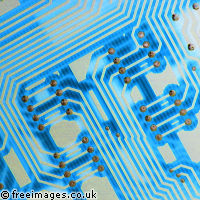Commission launches JTIs on nanoelectronics and embedded computer systems
The European Commission has launched two new Joint Technology Initiatives (JTIs) designed to boost Europe's competitiveness in the fields of nanoelectronics and embedded computer systems. ENIAC (nanoelectronics) and ARTEMIS (embedded systems) are both public-private partnerships, which unite industry, the research community and public authorities. By streamlining research effort and funding in this way, the Commission hopes to overcome fragmentation in these important sectors, promote economies of scale and shorten the time to market for products based on these technologies. The budgets of the JTIs (€3 billion over 10 years for ENIAC and €2.5 billion for ARTEMIS) will come from the participating industry and research organisations, the European Commission and other public authorities. ENIAC and ARTEMIS were officially endorsed by the European Parliament and the Council of Ministers at the end of 2007. Within the next few months, both JTIs will become fully operational as organisations based in Brussels with their own rules, staff, premises and budgets. They will be responsible for coordinating research through calls for proposals; both JTIs plan to launch their first calls for proposals in the first half of the year. The nanoelectronics sector has the potential to deliver new features and services in a range of sectors including telecommunications, transport, consumer goods, manufacturing, healthcare and energy. 'Today, it is the smallest technologies that are taking the largest leaps forward, and our industries must do the same,' said Viviane Reding, the EU's Information Society and Media Commissioner. 'The possibilities offered by nanoelectronics are only limited by our imagination. They underpin all aspects of everyday devices and so concern everyone in Europe.' 'We welcome the start of the ENIAC Joint Undertaking, as the fulfilment of the new comprehensive public-private approach that will increase the competitiveness of Europe in the field of nanoelectronics,' stated Alain Dutheil, Chairman of the ENIAC European Technology Platform and newly appointed President of AENEAS, the association which will oversee the activities of ENIAC. 'Now that the Joint Undertaking has been launched, it is time to move to the implementation phase and transform the ENIAC Strategic Research Agenda into strong industrial research projects. Large enterprises, innovative small and medium enterprises, and research centres and organisations throughout Europe will all play key roles and we invite all R&D players in Europe to join AENEAS and participate in this new opportunity and challenge.' Embedded computer systems are already widespread; 98% of computing devices are embedded in electronic equipment and machines in our homes and places of work. They can be found in items as diverse as credit cards, mobile phones, cars, aeroplanes, washing machines and televisions. 'Invisible computers embedded in all devices of industrial application can have a tremendously positive impact on Europe's economy,' commented Ms Reding. 'More and more, useful applications affecting the daily life of consumers rely on such embedded systems, whether in credit cards or in cars. Also the new Airbus includes many embedded technologies from fly-by-wire to cabin pressure control.' 'The use of embedded computer systems is the major enabler for innovation and competitiveness of major industrial sectors like automobile, manufacturing, airplane, consumer electronics, communications, public infrastructure and medical instrumentation,' added Professor Yrjö Nuevo, President of the ARTEMISIA association. 'The unique feature of ARTEMIS is creating cooperation among these otherwise relatively distinct sectors. By federating large industrial corporations, small and medium sized technology companies, research institutes and universities, ARTEMISIA will create a new and dynamic industrial ecosystem focused on embedded systems. This will lead to increasingly advanced technology, more compelling products, more useful applications, as well as increasingly effective training of a skilled workforce all over Europe and emerging standards that we expect will gain worldwide acceptance.'



